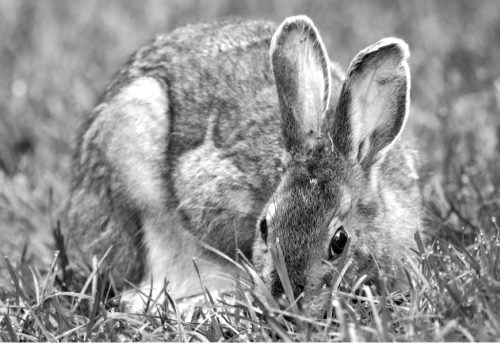
Several years ago, I ran over a rabbit in the car on a lonely stretch of highway. I don’t remember what kind of rabbit; it wasn’t important at the time, probably not even to the rabbit. What mattered was that the rabbit was alive, and then it was dead.
As is typical of deserted roads in the Adirondacks, it was several miles before I could find a place to turn around, but I felt it was important to return, to take responsibility for my action, inadvertent as it was, and honor the life taken. When I returned I discovered the rabbit had hopped or been thrown to the side of the pavement, where it died. I was struck not with pity or regret or self-recrimination, but with confusion and then with wonder. Because the rabbit was not there. The body lay beside the road but the rabbit was gone gone gone. The rabbit had hopped away, with no attachment to the physical form or the place of death. Perhaps I could call its spirit back and ask forgiveness, but why do that, except to placate my own spirit? It happened. The rabbit had moved on. I needed to do the same.
I tend to think that the ease with which the rabbit slipped out the world had to do with the temporal nature of cornerstone species, their short lives making their foothold in this world a tentative one. I imagine that the long-lived elephant would leave with a long good-bye, especially from what I have read about elephant funerals and elephant graveyards. Then too, our North American leporidae are not social creatures, unlike elephants and Old World rabbits. A social hierarchy seems to anchor a species to the earth, creating as it does a more complex system of obligation.
Given the rabbit’s ease in slipping into the world of the dead, it is interesting that graveyards provide such a hospitable living environment for rabbits, hosting open grassy spaces in metropolitan or densely forested areas. While we usually think of bats and spiders at Halloween, the rabbit seems like a highly appropriate animal to meditate upon as the veil grows thin.
In my book, Invoking Animal Magic, I devote a whole chapter to folklore about rabbits and hares.
